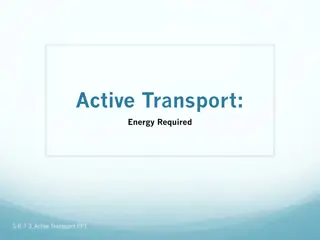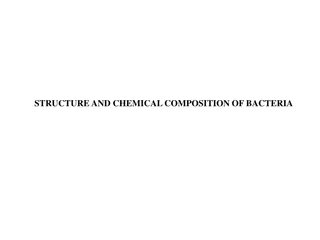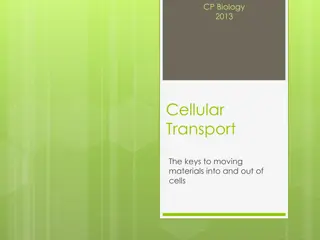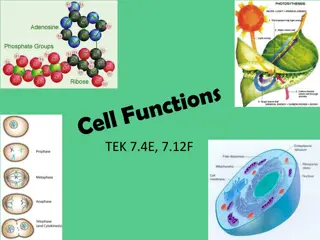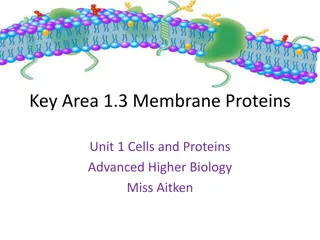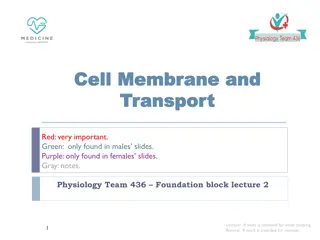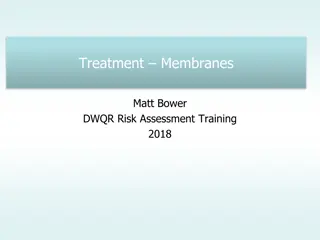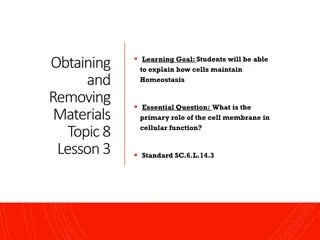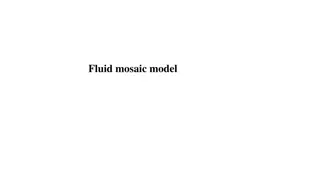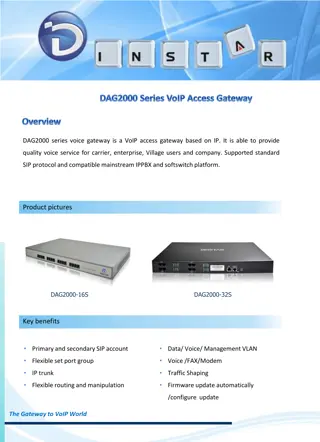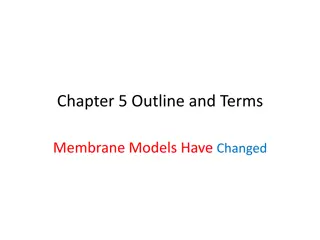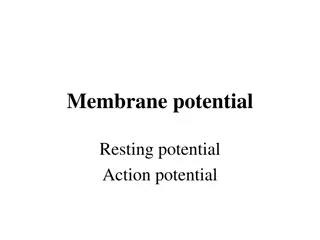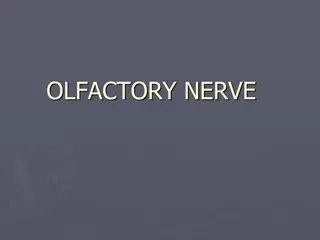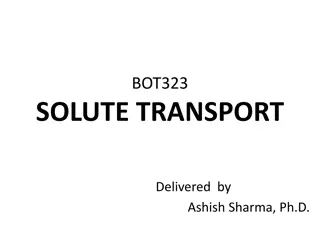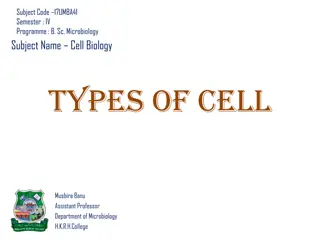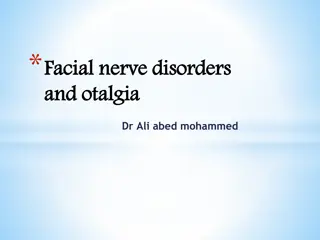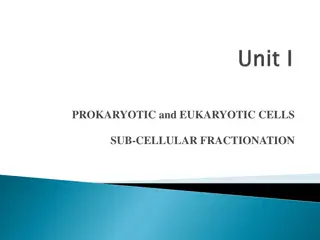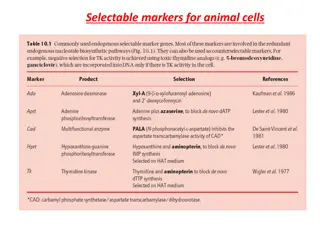Gateway to the Cell: Nerve Cells & Cell Membrane Functions
This post-test explores nerve cells' ability to generate electrical impulses and how the structure of the cell membrane aids in separating the cell from its environment. It also delves into membrane permeability, ion movement, and protein functions.
Download Presentation

Please find below an Image/Link to download the presentation.
The content on the website is provided AS IS for your information and personal use only. It may not be sold, licensed, or shared on other websites without obtaining consent from the author.If you encounter any issues during the download, it is possible that the publisher has removed the file from their server.
You are allowed to download the files provided on this website for personal or commercial use, subject to the condition that they are used lawfully. All files are the property of their respective owners.
The content on the website is provided AS IS for your information and personal use only. It may not be sold, licensed, or shared on other websites without obtaining consent from the author.
E N D
Presentation Transcript
Cell Membrane cell membrane is the boundary separate cell from its environment All cells have a cell membrane made of proteins and lipids
DIFFERENT MODEL Overton(1902) postulated that the plasma membrane is composed of a thin layer of lipid. Danielli and Davson(1935) proposed the trilamillar model. Robertson(1959)proposed the Unit membrane concept. Singer and Nicolson(1972) put farward the fluid mosaic of membrane structure .it is the most widely accepted model.
FLUID MOSAIC MODEL Fluid-because individual phospholipids and protein can move side-to-side with in the layer, like its a liquid. Mosaic- because of pattern produced by the scattered protein molecules when the membrane veiwed below.
Lipids of cell membrane Membrane is made of special kind of lipid phospholipids Membrane is a double layer phospholipid bilayer inside cell outside cell
Phospholipids Phospholipid make up the cell membrane. Contain two fatty acid chain that are non polar . Head is a polar and contain phosphate group and glycerol.
Polar head are hydrophilicwater loving Nonpolar tails are hydrophobic water fearing
Membrane fluidity Two factors that are determine fluidity are 1-The length of fatty acid chain. 2-The degree of un-saturation (simply number of double bond)
cell needs materials in & products or waste out IN food - sugars - proteins - fats salts O2 H2O OUT waste - ammonia - salts - CO2 - H2O products - proteins
Semi-permeable membrane Cell membrane is a semi-permeable membrane. Cell membrane controls what gets in or out Need to allow some materials but not all to pass through the membrane only some material can get in or out O2 H2O lipids aa salt waste sugar
Semipermeable Membrane Small molecules and larger hydrophobic molecules move through easily. e.g. O2, CO2, H2O
Function of the cell membrane Protective barrier Regulate transport in & out of cell (selectively permeable) Allow cell recognition Provide anchoring sites for filaments of cytoskeleton Provide a binding site for enzymes Interlocking surfaces bind cells together (junctions) Contains the cytoplasm (fluid in cell) Cell membrane separates the components of a cell from its environment surrounds the cell Gatekeeper of the cell regulates the flow of materials into and out of cell selectively permeable Cell membrane helps cells maintain homeostasis stable internal balance
Q-1 which one of the following is not amembranelipid a-cholestrol b-phosphoglyceride c-cerebroside d-choline
Q-2in plasma membrane ,carbohydrate present on the a-both layer b-only on cytoplasmic side of lipid bilayer c-only on non cytoplasmic side of lipid bilayer d-none Ans-c
Q-3carbohydrate present on the plasma membrane a-have structural role b-forms channel c-act as carrier d-help in molecular recognization Ans-d
Q-4Generally accepted features of biological membrane include all of the following except asymmetric arrangement of lipid b-rapid diffusion of inorganic ions across lipid bilayer lateral diffusion of lipid d-lateral diffusion of integral and peripheral proteins. Ans-b
Q5-The plasma membrane is impermeable to all molecule except. a-glucose b-ATP c-urea d-K Ans-c
Q6-Which of the following statements best describes the fluid mosaic model of the plasma membrane? a-A single layer of lipids surrounding a layer of proteins. b- A single layer of proteins surrounding a single layer of lipids. c- A lipid bilayer with protein molecules dispersed within it. d-A single layer of proteins with lipid molecules dispersed within. e- A protein bilayer sandwiching a layer of lipids. Ans-c
Q7-Which item below is NOT a function performed by proteins found in the plasma membrane? a-Receptor for chemical messenger molecules b-Joining of adjacent cells c-Transport of solutes. d-Attachment site for cytoskeleton e-Synthesis of proteins. Ans-e
Q8-Which of the following molecular components of the lipid bilayer of the plasma membrane possesses a charged polar "head" and an uncharged non-polar "tail"? a- Integralprotein b-Glycolipid c- Cholesterol d-Phospholipid e-Glycoprotein Ans-d
Q9- Selectively permeable membrane means a-only certain substances can pass through the membrane b-all substances can pass through the membrane c- the membrane forms a seal keeping all materials contained at all times Ans-a
Q10-A substance can cross the cell membrane when it is aided by one of these a-transport protein b- isotonic solution c- lipid bilayer Ans-a


